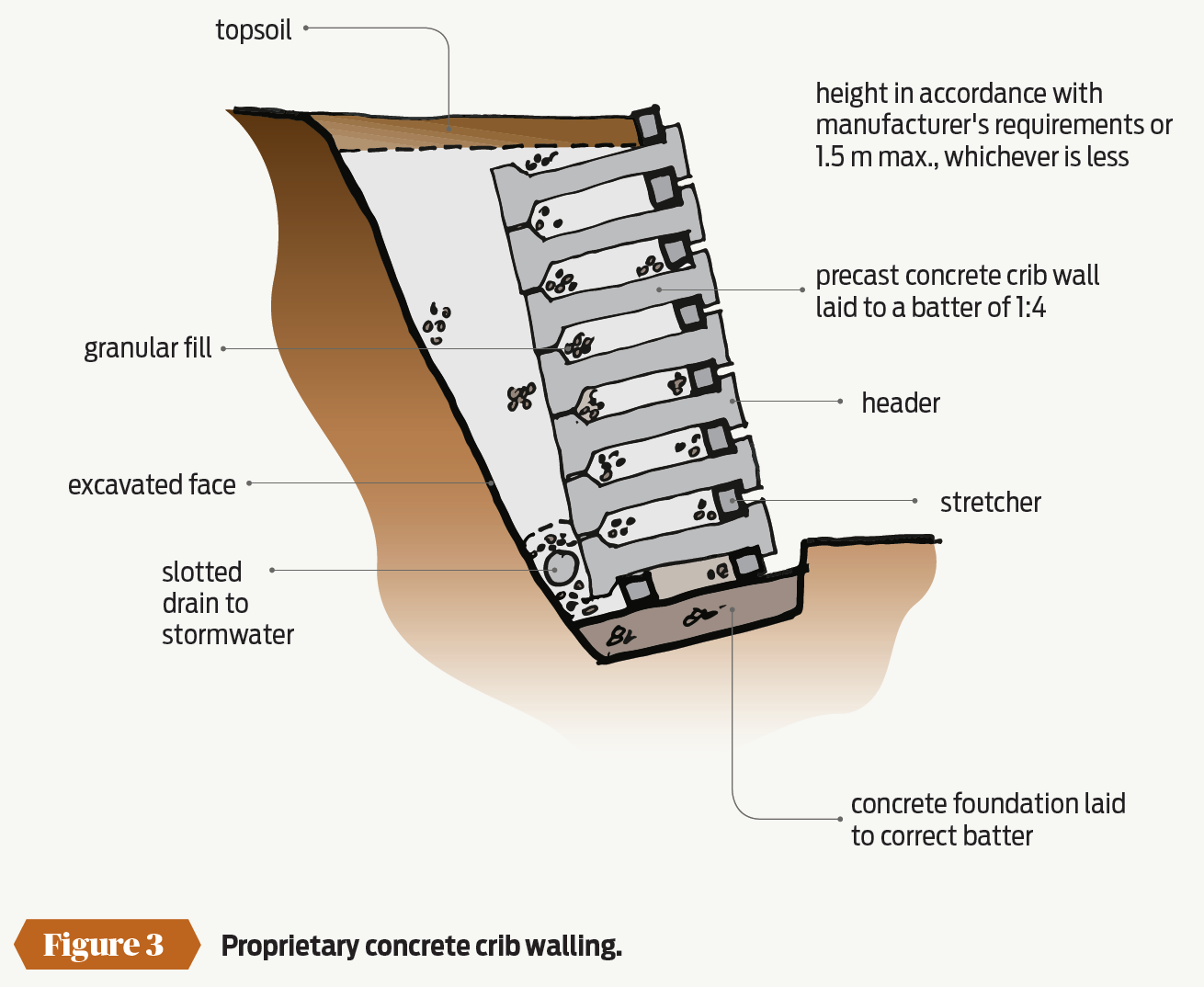How low can you go?
20 May 2016, Prove Your Know How, Technical
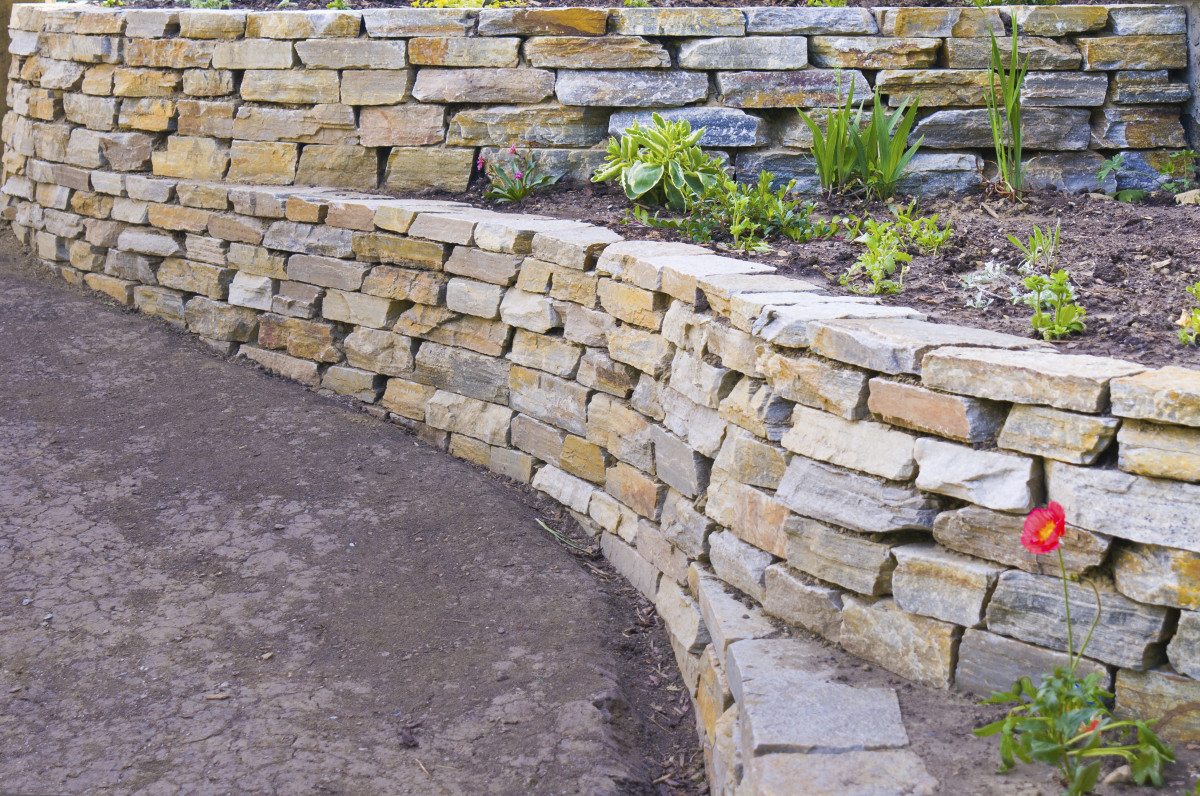
Retaining walls can be subjected to large amounts of force, so they need to be well built and well designed, including those that don’t require a consent
Retaining walls support the ground where there is a slope or change of grade. They must withstand the combined loads of the soil, water content and any surcharge or extra load, such as sloping backfill, building or vehicle loads. 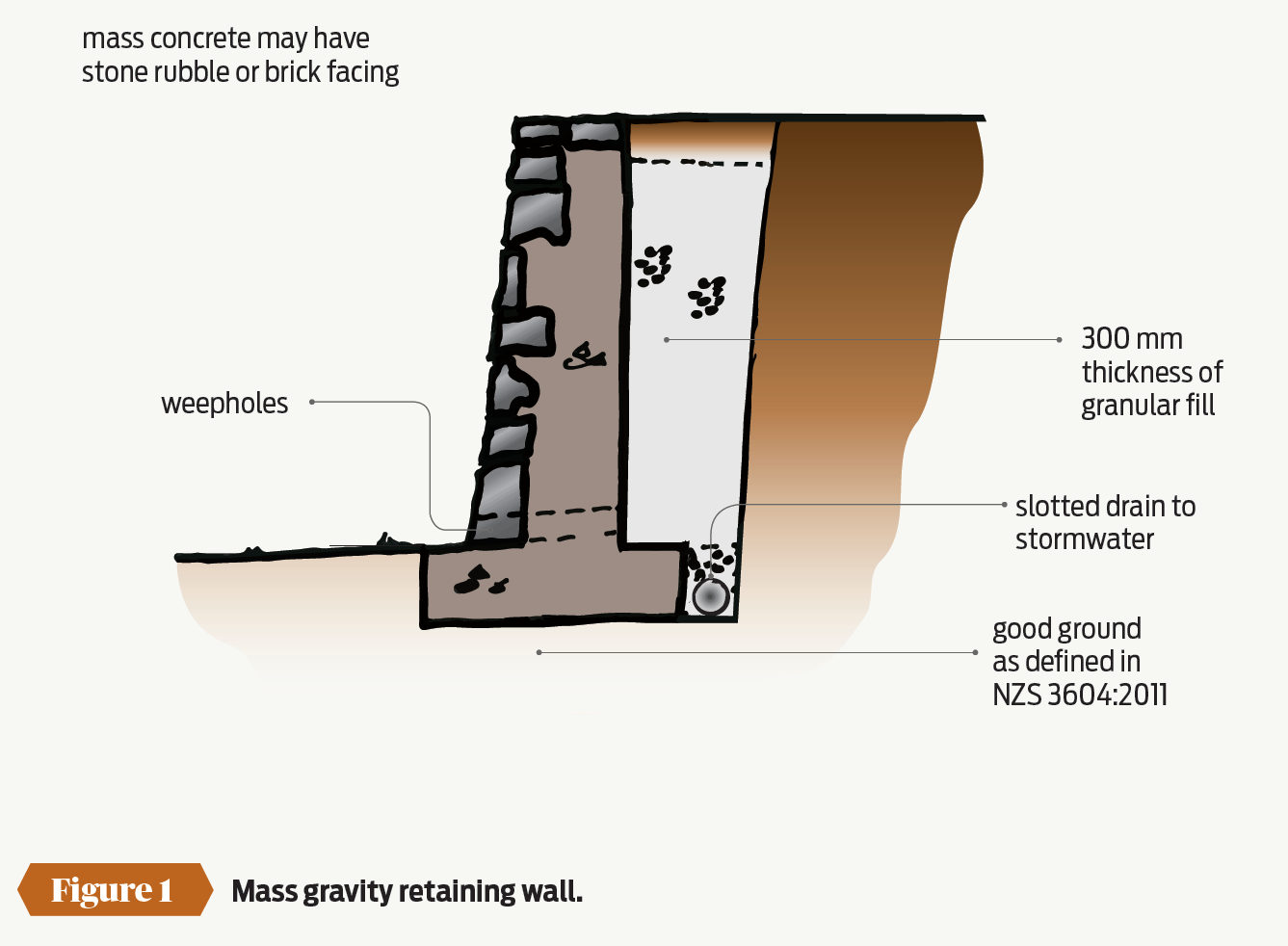
Consents when height exceeds 1.5m
A building consent is not required under clause 1(c) Exempt building work of Schedule 1 to the Building Act 2004 only when:
A wall retains no more than 1.5m of ground; and, does not support any surcharge.
A building consent must be obtained in all other situations. Where consent is not required, the wall must still comply with the Building Code, including clauses B1 Structure, B2 Durability and F4 Safety from falling. BRANZ recommends that advice is sought from a chartered professional structural engineer for all walls over 1m high. 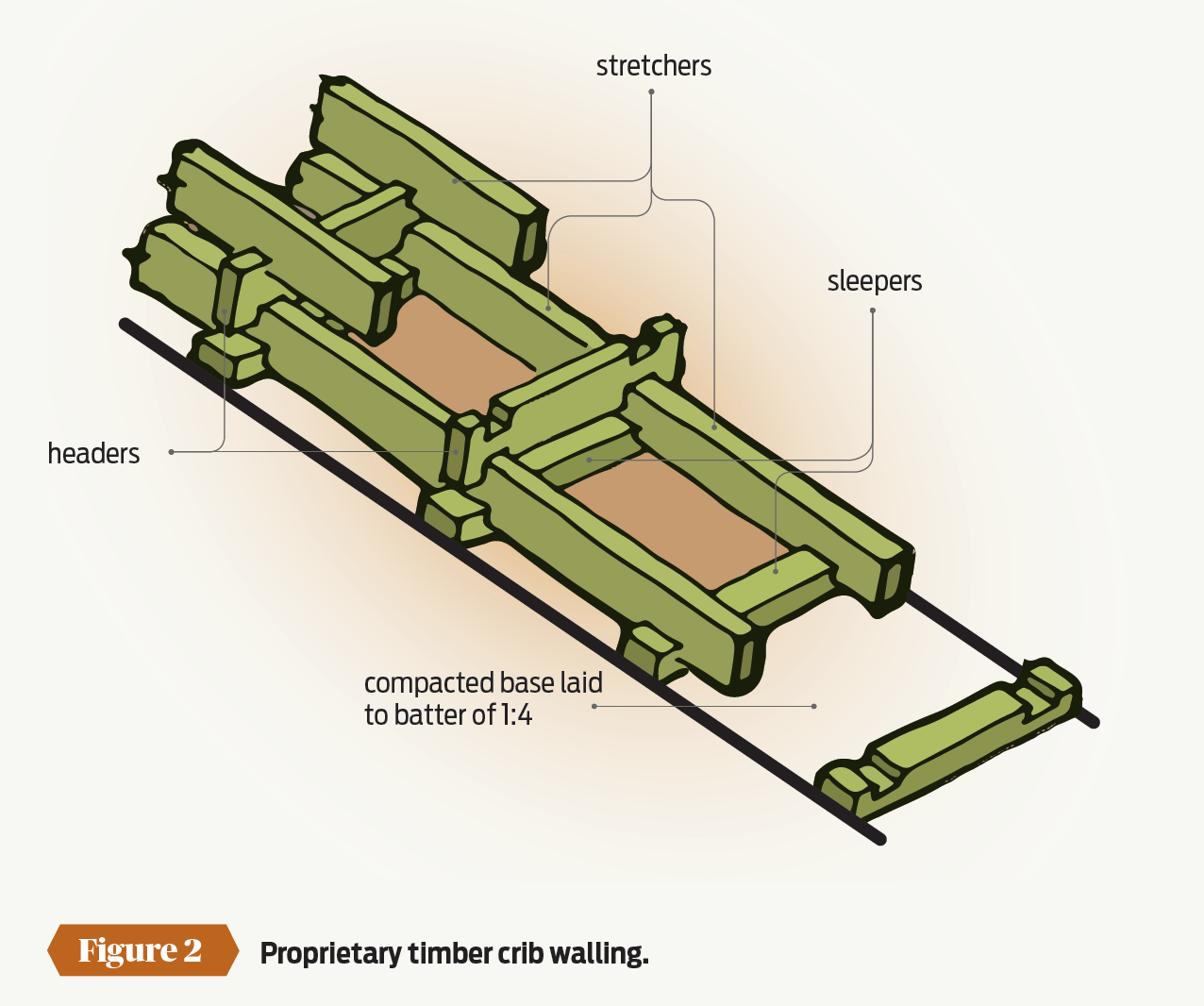
Drainage needed behind wall
Retaining walls must have drainage behind them to prevent water build-up, which can increase the load or lateral pressure and reduce the wall’s bearing capacity.
Place a minimum thickness of 300mm of clean metal or gravel drainage material immediately behind the wall, extended from the base to within 150–200mm of the wall’s top.
All retaining walls must have a subsoil drain falling to the storm water system and covered with a filter cloth or sock installed behind the foot of the wall to remove water. Weepholes must be provided through the base of a mass gravity wall and may be installed as a hydrostatic relief in other solid walls. BRANZ also recommends that:
- Subsoil drainage is installed behind open retaining wall systems, such as crib walls.
- A layer of filter cloth is installed to separate the drainage material and the soil behind the wall.
Types of retaining walls
There are several different retaining wall construction systems, including:
- Gravity walls, including mass gravity and crib walls.
- Segmental retaining walls, including mechanically stabilised embankment (MSE) walls.
- Concrete or concrete masonry cantilever retaining walls.
- Gabion walls.
Select a wall system that suits the site and soil conditions. Other factors to consider include the ability to get materials to the location of the wall, ease of construction, cost, appearance, drainage and water table level, as well as the distance from any adjacent slopes.
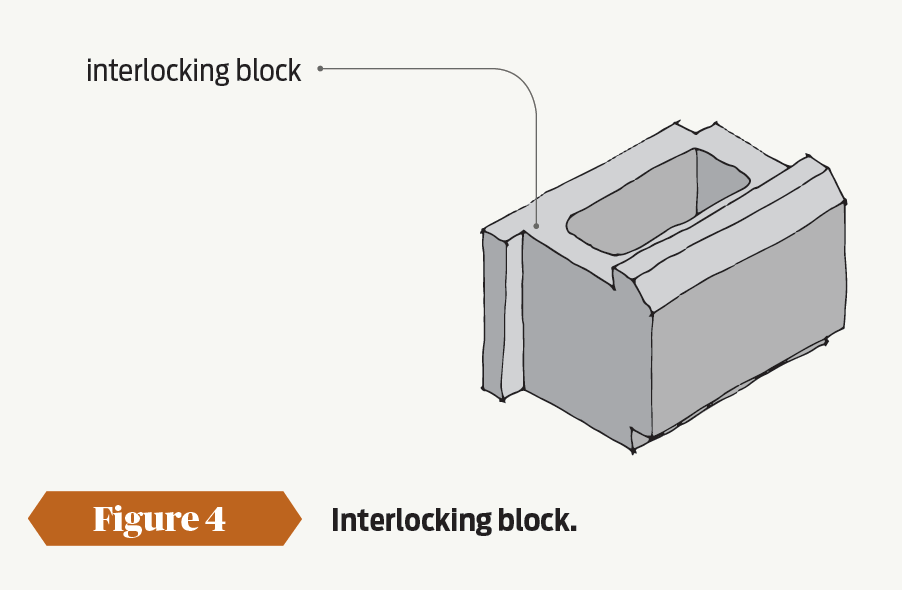
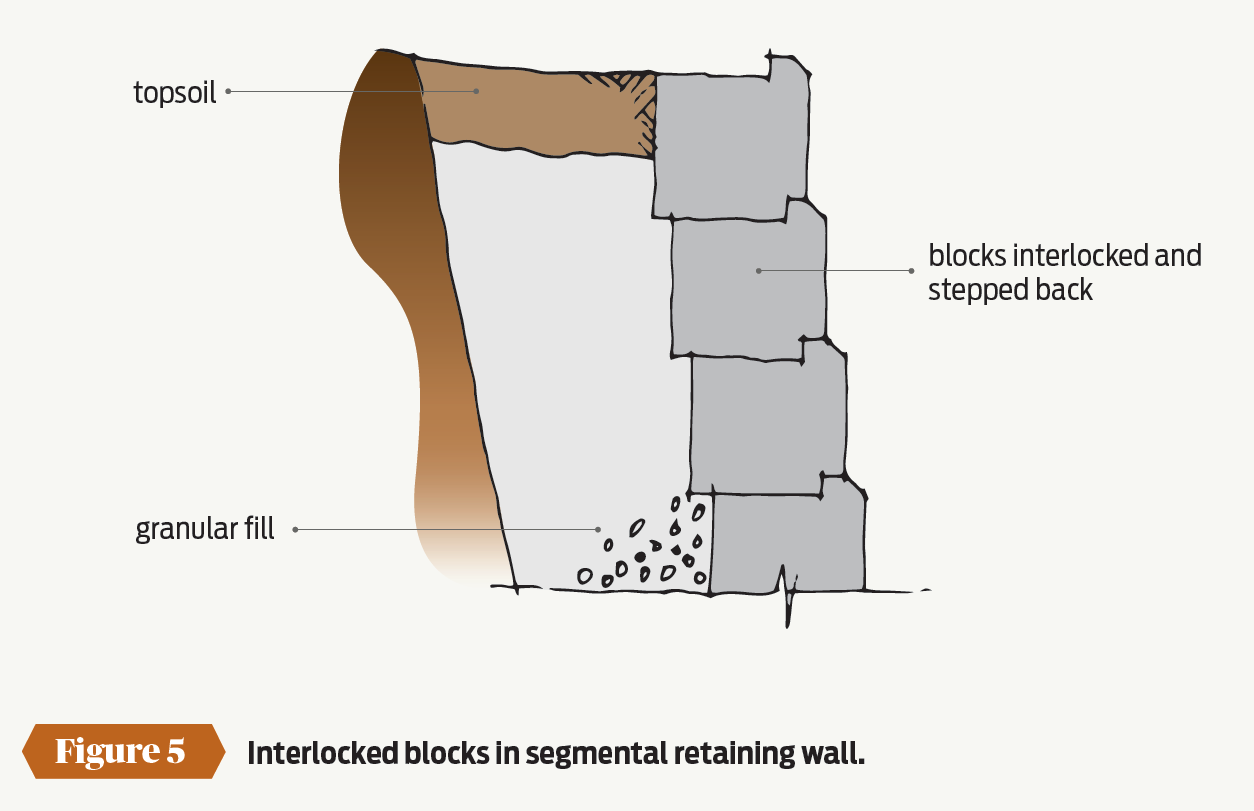 Proprietary systems are available. These should be constructed in accordance with the manufacturer’s information.
Proprietary systems are available. These should be constructed in accordance with the manufacturer’s information.
Mass gravity wall
A mass gravity wall gets its stability from its mass or weight. It has a low height-to-width ratio and is sloped back towards the bank (see Figure 1). They are either built of concrete, stone or a combination of the two and must be laid on good ground as defined by NZS 3604:2011.
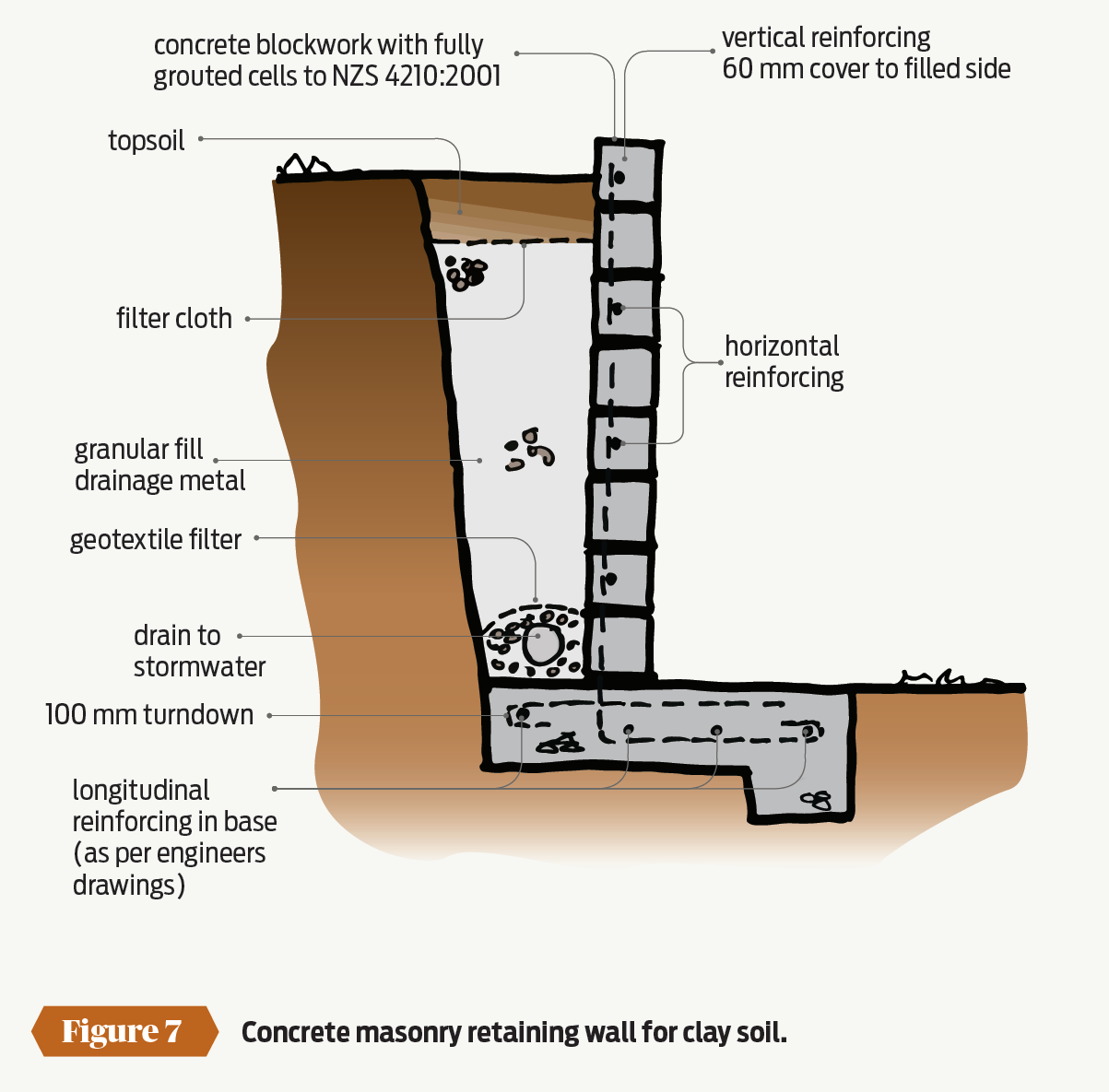
Crib retaining wall
Crib walls also retain by mass, but the mass or weight is obtained from the backfilled material placed in the wall.
They consist of either H5-treated timber or concrete interlocking header and stretcher units laid in alternate tiers, with a 1:4 backward slope or batter.
Once the units are laid, the whole structure is backfilled with granular drainage material (see Figures 2 and 3). The first stretcher course is laid on a concrete foundation or a compacted base to create the correct batter. The outer section of the wall may be filled with soil to enable planting of creeping or trailing plants.
Segmental retaining wall
Segmental or modular block retaining walls consist of dry-stacked (without mortar), interlocking concrete blocks.
The blocks interlock at each course (see Figures 4 and 5) and are stepped back to create the batter. Additional stability is provided by filling the hollow blocks with soil.
Alternatively, shear pin systems are sometimes used to secure the blocks. Segmental retaining walls may also have geogrid reinforcing fabric buried in layers in the compacted backfill behind the wall to provide additional stability to the soil. These systems are referred to as mechanically stabilised embankment (MSE) walls.
Cantilever wall
Cantilever walls provide support either by the installation of a wide, horizontal footing at the base or by cantilevered poles embedded in the ground. Wide-footing cantilever walls can be constructed from in situ reinforced concrete or pre-cast concrete masonry block with a concrete footing (see Figures 6 and 7).
For masonry cantilevered walls up to 2.2m high, details in NZS 4229:2013 may be used for the design.
Timber cantilever walls have H5-treated timber poles embedded vertically into the ground to a depth approximately equal to the wall’s height.
Poles are typically installed 900mm to 1200mm apart.
They project above the ground to support horizontal, H4-treated timber half rounds or interlocking tongue and groove boards behind the poles (see Figure 8). Design details may be available from pole suppliers. 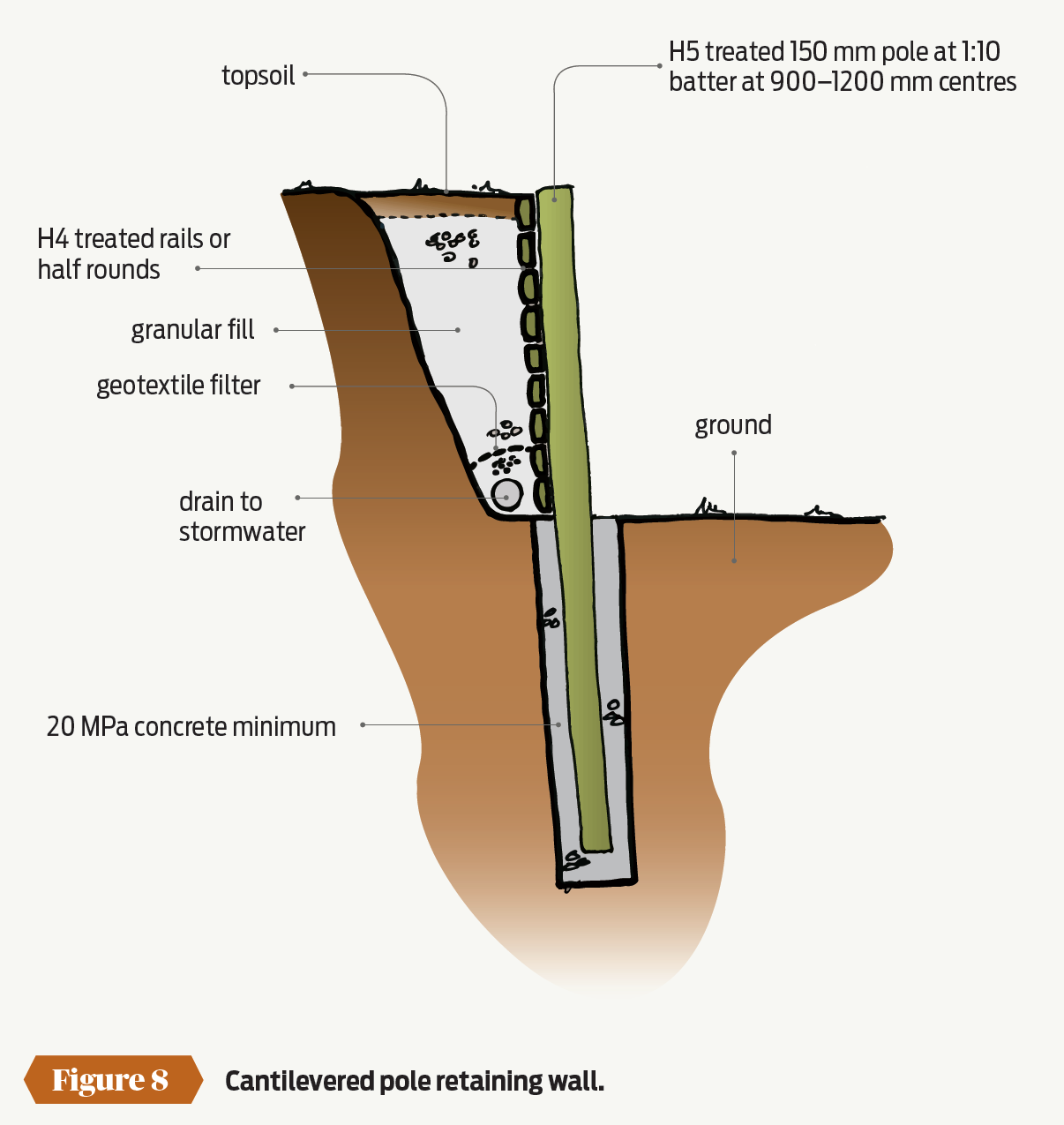
Gabion wall
Gabion walls also rely on the mass of the wall to provide retaining. They consist of steel mesh baskets filled with locally sourced rocks or stones, which may be tied together and stacked in tiers.
The baskets can be made to any shape or wall configuration, but they should not exceed a 2:1 height-to-width ratio and may be inclined up to 7°. Gabion walls do not need concrete foundations, but the bottom of the wall should be 150–200mm below the finished ground level to provide stability. Geogrid reinforcing fabric is sometimes buried in the backfill behind the wall.
Relevant standards and extra information
Standards relevant to retaining walls include:
- NZS 3602:2003 Timber and wood-based products for use in building.
- NZS 3604:2011 Timber-framed buildings.
- NZS 3640:2003 Chemical preservation of round and sawn timber.
- NZS 4210:2001 Masonry construction: Materials and workmanship.
- NZS 4229:2013 Concrete masonry buildings not requiring specific engineering design.For more information, refer to BRANZ Bulletin 562 Low retaining walls.
Register to earn LBP Points Sign in


